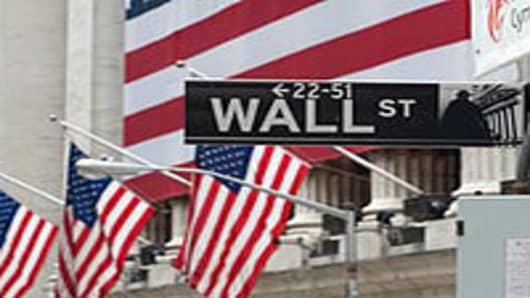While the rest of the country has seen a fairly tepid jobs recovery, Wall Street appears to be making a comeback.
Jobs in the financial sector jumped from February to May even as the private sector created few other jobs. Some 200,000 Wall Streeters lost their positions during the financial crisis, but 6,800 of those have come back, according to the latest data from the New York Department of Labor.
So even with the national unemployment rate mired at 9.7 percent, the picture for the world's financial center appears to be improving.
"We absolutely have seen an increase in the number of job positions and a reduction in the number of clients returning to our site," says Robert Graber, CEO at WallStJobs.com, an online bulletin board for out-of-work financial services professionals.
The site has seen a 43 percent increase in job postings in the second quarter over the first quarter, while the number of clients returning to the site has dropped 8 percent. Clients not returning signify that they are finding jobs and do not need the site anymore.
Broker-dealers are leading the surge in companies that are posting new jobs. Many of those positions are at the trading level, Graber says.
"It seems job seekers are coming off the market, though not as fast as we'd like. As more jobs are out there we're getting fewer and fewer registrations," he says. "These are solid companies, such as large banks, institutional firms, investment banks."
Among the more prolific firms posting on WallStJobs are MetLife and Ameriprise Financial .
Graber says his firm has just landed three more "major accounts" with companies intending to post job listings on the site.
"I think the trend is going to continue," he says. "Companies are really turning back towards hiring. It looks positive."
The trend comes during an uncertain time for employment. The latest snapshot of hiring will come out this Friday when the June employment report is released.
Hiring of census workers helped push total nonfarm payroll growth up 431,000 for May. But economists expect the story to be different in June, with an expected net loss of 115,000 jobs and a slight uptick in the unemployment rate to 9.8 percent.
The coming months, then, will be a test to see whether the jobs market has truly found its legs, as many economists project, or if more pain will be felt.
"The trend in hiring by the private sector should show a gradually improving trend," says Peter Cardillo, chief economist at Avalon Partners in New York. As for Wall Street positions, "They will come back, but a lot depends on several factors: One, future taxation; and of course the economy itself."



